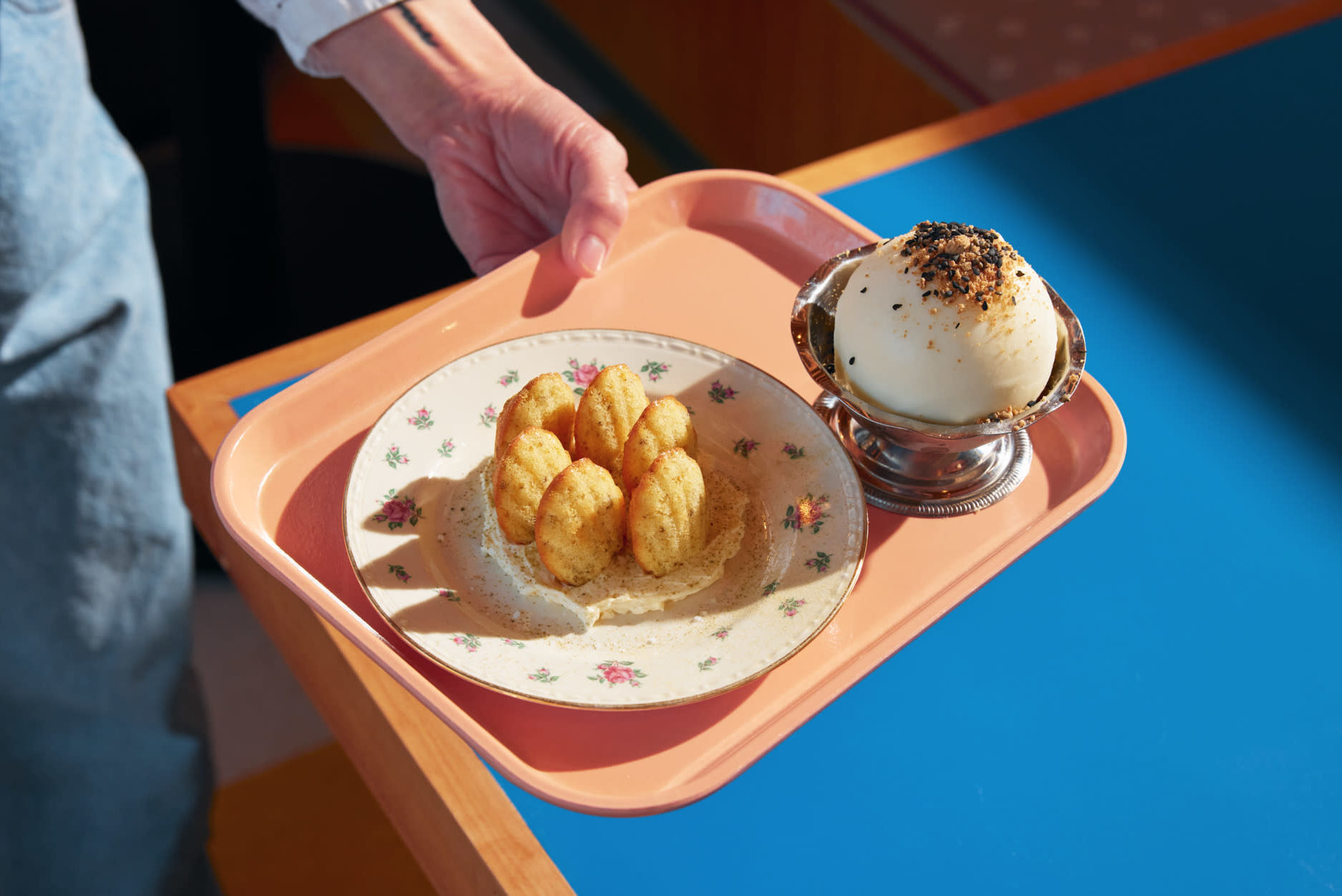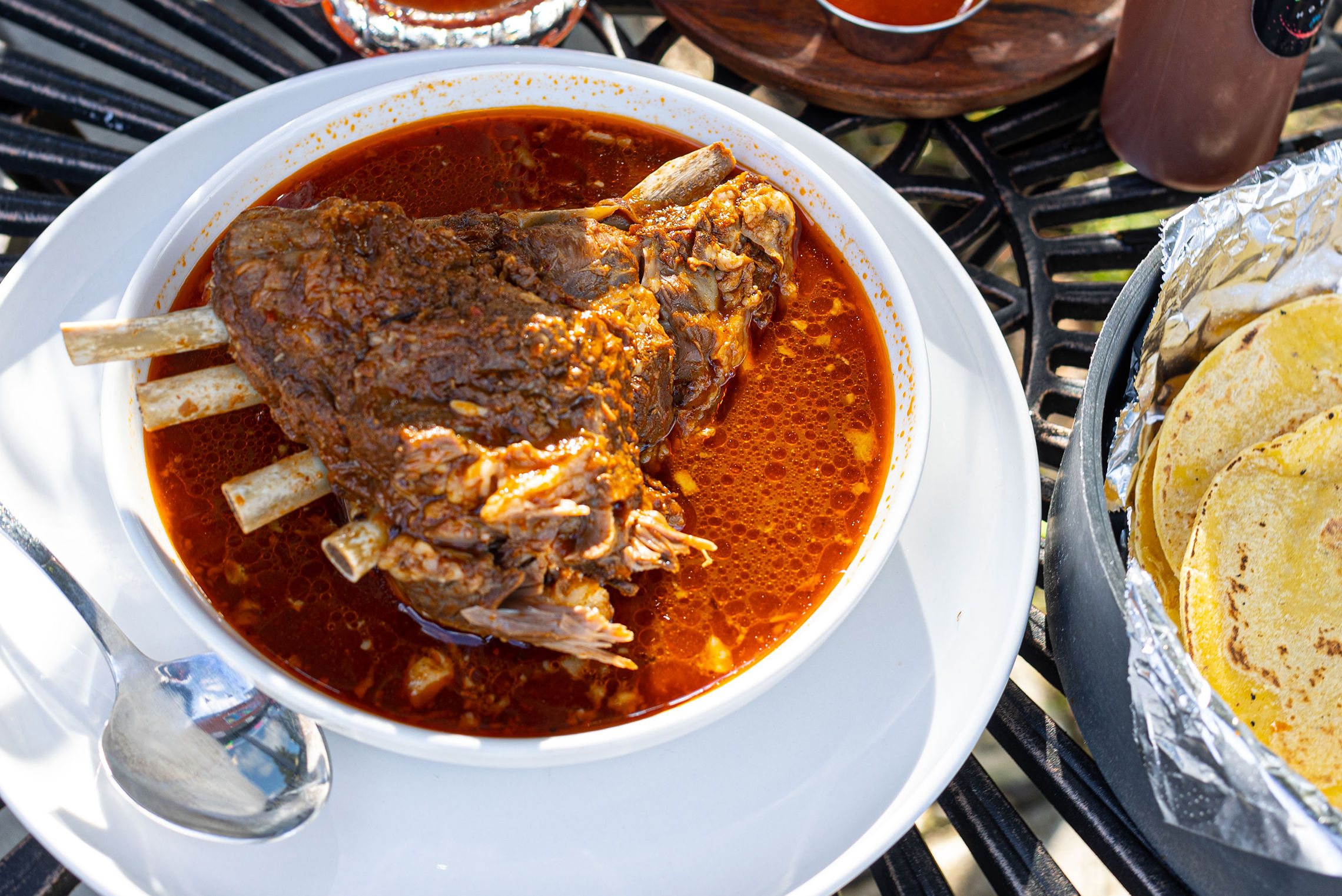Cult of the Cannelé
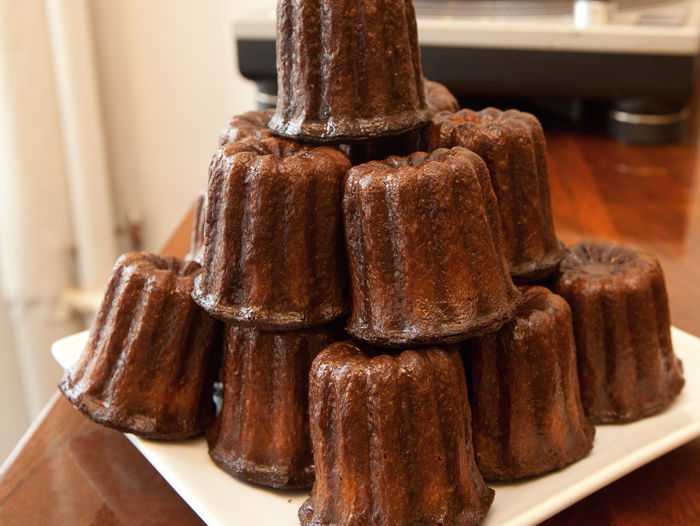
At Courier coffee shop, heavenly cannelés are devoured to vintage beats from a countertop turntable.
Image: Stuart Mullenberg
SIX DAYS A WEEK, micro-roaster Joel Domreis holds court behind a slim walnut counter at Courier Coffee Roasters, just around the corner from Powell’s Books downtown. In this spare storefront, friendly baristas filter fine coffee into mason jars, hand-whisk hot chocolate to order, and chat customers up like bartenders. Domreis writes his commitment on every bag of beans by hand, listing the varietal, the farm, the port of arrival, the roasting day, and, for good measure, his cell phone number. A turntable on the counter riffs on the house mood—unpredictable and personal. Dollars are exchanged by hand and clamped on a clipboard. In this intimate den, a cash register would be gauche.
But Domreis’s other love is baking. Throughout the day, wonderfully weird treats emerge from a convection oven stashed under the counter. Courier’s tiny collection, stacked on a cutting board, includes maximal seed bars, healthy muffiny things, and addictive cookies mounded with chunks of Ecuadorian chocolate. And, in recent months, the 31-year-old—who still delivers coffee beans by bike—steered into a school of French baking that makes even professional cooks tremble: the cannelé.
Since its inception, the famously finicky pastry has inspired cantankerous debates, hair-splitting rules, and blogs chronicling quests for perfection. (Writes one cook of her cannelé journey: “If you follow me on Twitter, you couldn’t have missed the furious ravings, fleeting triumphs, and befuddled exasperations.”) No records of origin exist for cannelé (kan-uh-lay), but southwest France claims birthrights, haughtily citing regional inspirations dating back to the 18th century. In a fret over imposters in the 1980s, Bordeaux’s pâtissiers even formed a cabal of the cannelé, sealed the “authentic recipe” in a vault, and vowed never to reveal its secrets. Their version is called canelés de Bordeaux; for everyone else, from Paris to Portland, the term is cannelé bordelais. And this is only a hint of the madness.
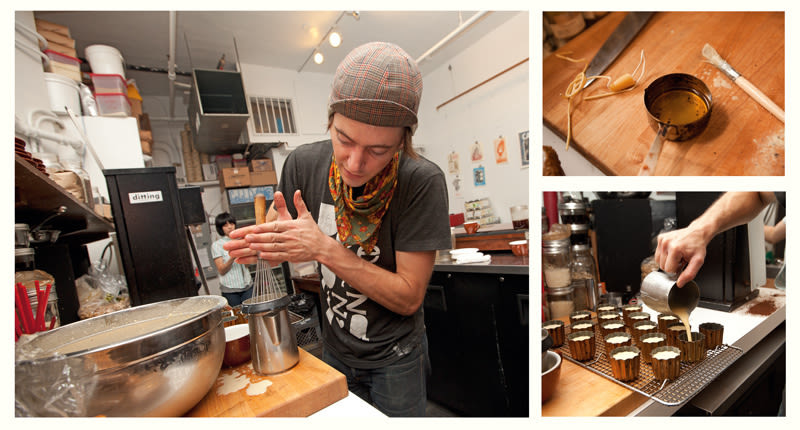
Microroaster Joel Domreis juggles latte duty with the cannelé baker’s art, whisking batter, melting beeswax, and filling copper molds in a makeshift kitchen.
Image: Stuart Mullenberg
This much we know: the pastries begin with a deceptively simple blend of milk, egg yolks, butter, flour, sugar, vanilla, and dark rum (the proper temperature or technique for each ingredient is fodder for argument). The batter must “rest” for 24 hours. Meanwhile, tin-lined copper molds are laboriously brushed with melted beeswax, the sine qua non of the cannelé and the source of its honeyed glow and intoxicating crunch. When the ice-cold molds, filled with chilled batter, are popped into a hot oven, the magic begins as the push-pull of hot, cold, and copper forges a pastry unlike any other. Imagine a fluted fortress of caramelized crackle hiding something cool and comforting within—a realignment of custard, sponge cake, and heaven. The best specimens sport a forbidding shell that is nearly black, and customers often mistake them for burnt pastries. Few bakers crack the complexities, but when they do, the skies open.
Domreis had never heard of a cannelé when he landed on a cookbook photograph in January and thought, “Wow, that looks cool.” Experiments began the next day. Months later, with his saucepans and compulsive focus on detail, Domreis now bakes up a compelling Cannelé Extreme, its slightly bitter, burnt-sugar shell so exhilaratingly intense that the springy, buttery interior barely registers as sweet. Now, in a setting that seems to have been imagined by Portlandia’s writers, coffee-seeking geeks compete for seats with a cult of cannelé regulars.
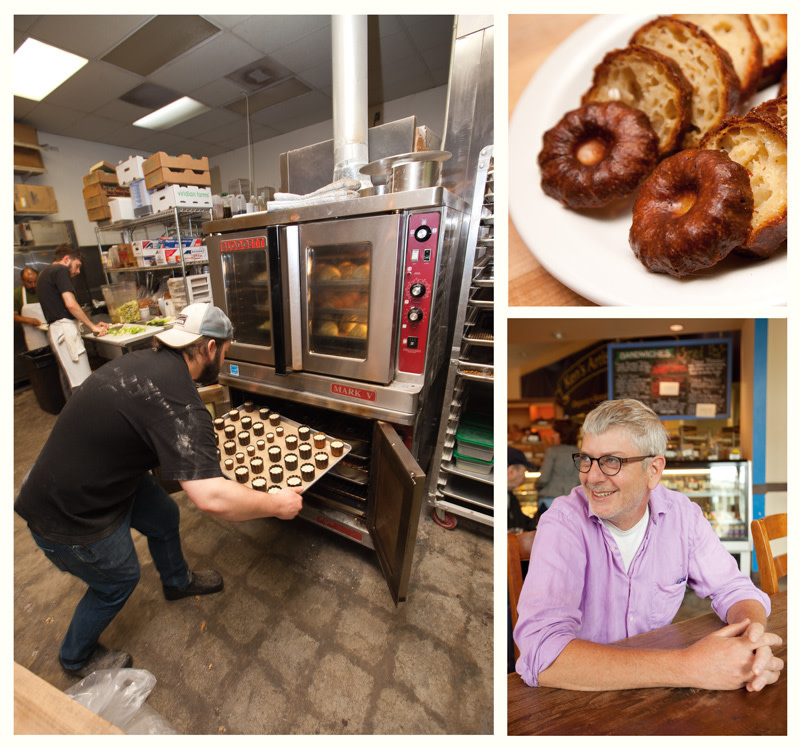
At the esteemed Ken’s Artisan Bakery, cannelés get the royal treatment in a heavy-duty convection oven. Baker Ken Forkish (below-right) brought the mysterious cake–meets–custard pastry to Portland in 2001.
Courier is following in the footsteps of Ken’s Artisan Bakery, a respected veteran in Portland’s ever-hipper food scene. Just 30 years ago, cannelés were a rarity outside of Bordeaux. These days, the hand-held treat is très chic in Paris, but still obscure in America—everywhere except (surprise!) Portland. Local patisseries are seemingly embroiled in a citywide cannelé challenge, from Nuvrei’s shiny mahogany domes to St. Jack’s custardy, candy-like treats. But the pastry first came to town thanks to Ken Forkish.
Forkish stumbled on his first cannelé in France in 1996, fell in love, and vowed to re-create the joy of discovery for a new audience. After using a recipe from famed pastry chef Gaston Lenôtre, Forkish eventually made them his own at his new bakery in 2001. His cannelés were more cakey than custardy, with a potent perfume. Where most bakers blend their beeswax with oil, Forkish embraces all-out purity, and the payload is a thrilling rush of honeycomb flavor, baked to a deep chestnut brown. Every bite makes your tongue laugh; even the Bordeaux brotherhood would smile.
But most customers blow by these odd-looking pastries—cannelés, for all the labor they demand, will never compete with Ken’s bronzed croissants and glistening galettes. Forkish, not to be deterred, simply gave them away for years. The bakery now sells a mere four dozen a day. The commitment clearly pays off in something less tangible—a fulfillment of the baker’s imperative to share deep pleasure at any cost.
Courier’s bare-bones approach springs from the same spirit. Domreis’s one-man cannelé band begins at 6 a.m. and plays for several hours, rotating sheets of copper tins every five minutes to ensure even browning. In the afternoon, he preps, scooting up a ladder to scoop high-quality Shepherd’s Grain flour from outsize bags between his espresso pulls. He scrapes vanilla beans with his Swiss Army knife, then rubs the paste on the blades of a whisk, so every speck is respectfully dispersed into the batter. Late one summer day, he broke concentration only to carefully flip vintage vinyl on the turntable an arm’s length from the mixing bowl. Music at Courier is also nourishment, and central to life.
For some of the best bakers, the grail of the cannelé is unachievable. For Domreis, it’s no challenge at all, just a fun journey that flows easily through his self-made world. He makes 18 cannelés a day; his daily haul for the effort is $36. The return on his investment is simply the purest form of joy. “I don’t look at labor costs,” he says. “This is my life. All it costs me is my vigilance.”
